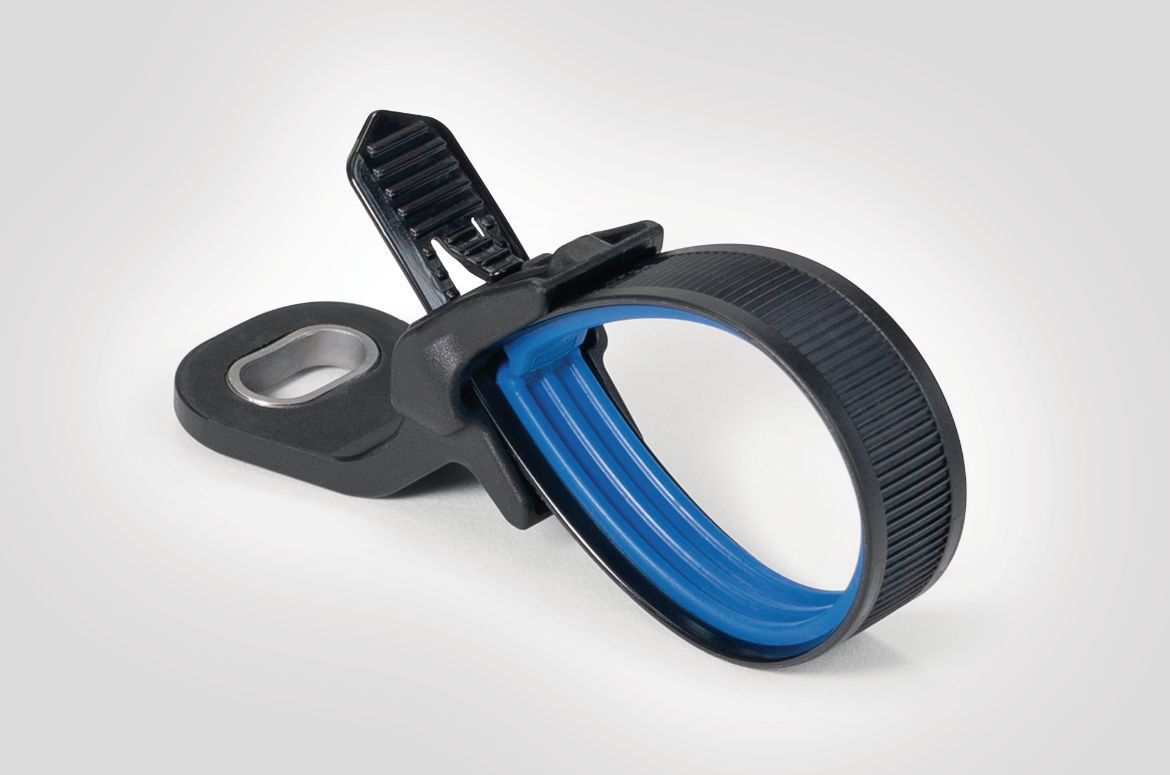The EV market is mushrooming, with projections suggesting that in only ten years’ time, around half of all the new cars sold will be fully electric. The speed of that shift to highvoltage systems, coupled with an increasing array of sensors,
is making an earlier and more systematic approach to harness fastening and routing in the vehicle architecture inevitable.
Although the challenges for product managers and engineers are not new, they are throwing up new hurdles: space utilisation, electromagnetic interference, vibration noise, weight optimisation, thermal management and automated
harness production. Practicable solutions to the points of detail that keep them up at night are often found at the nexus of collaboration with external cable management specialists.
One size doesn’t fit all – just yet
Although the technological challenges are universal, OEMs are pursuing different philosophies regarding their platform architecture. Consequently, today’s fastening components must check off many boxes – minimal weight, cost control,
flexible routing orientation, easy insertion combined with high extraction force, simple or pre-assembly, impact resistance, high and low temperatures, UV and chemical resistance, and not least, scalability.
As a collaborative partner to OEMs and first tier suppliers, our short-term role is to facilitate the development of costeffective bundling and fixing parts in a given architecture. But beyond that, according to Harald Gottlieb, Automotive Director at HellermannTyton, the company’s aspiration is to provide innovative component solutions that minimise assembly costs across different platforms.
That means keeping an eye open for the commonalities across a range of isolated part development projects with similar briefs. And then evolving standardised approaches wherever possible. It’s an exciting time which calls for a lot of imagination, inventiveness and ultimately good working relationships with the customer base.
Getting a grip on thermal management
Higher voltages and bigger battery packs require active cooling at the charging inlet. So, the fastening of fluid pipes for optimal thermal management is taking on new significance in
the EV context. Welding on custom fasteners consumes a lot of process time and effort. To turn that around, HellermannTyton has returned to the drawing board and factored in all the requirements for more efficient assembly. The result is Soft Grip, a fixing tie designed to save time, money and
development effort around fluid management.
This unique twin-shot fixing tie is easily adaptable to a range of application requirements. It is injection moulded from heat-stabilised PA66HS with a soft TPE inner layer. It grips hoses and wires without damaging them, inhibits lateral and rotational movement on smooth bundles, and suppresses
vibration rattling. The tie head slots into a variety of different mount configurations. In this way, one Soft Grip fixing tie can replace a variety of p-clip diameters and also reduce the need for lots of bespoke fasteners. The foot part and the mount geometry can be easily adjusted to fit individual requirements,
making it a highly versatile, cost-effective, and scalable part solution.
© HellermannTyton image: Fixing tie for screw fixation
Moving towards standardised HV clips
Different high voltage routing preferences from manufacturer to manufacturer are also turning out a variety of specific requirements, like conductor spacing and material expectations. These currently preclude off-the-shelf solutions.
The building block approach that HellermannTyton has applied to the Soft Grip mounts also translates well to HV clips and clamps. It ensures that moulds can be easily reconfigured for a
variety of mounting options and geometries without having to start the design and tooling from scratch.
Collaboration with experienced fastening designers who have this mindset helps OEMs to achieve optimal design and costefficiency.
For example, we view each HV clip that we develop from all perspectives, including ease of assembly, reliability and scalability across many platforms.
Already, automotive customers are benefiting from our insights gained in aerospace part development. These help us strike the right balance between component weight, size, durability and
temperature performance.
© HellermannTyton image: Fixing tie for stud, outside serrated
Automation of harness production
Looking to the road ahead, the good news is that HV wiring systems, and especially flat busbar conductors, are relatively simple constructs with few branches. This not only simplifies
their manual pre-fabrication but also brings us a step closer to the automated application of fasteners.
There is already a broad portfolio of clips that can be applied to round cables by HellermannTyton bundling tools. Needless to say, we are already testing the automated application of clips to
busbars for OEMs using these ‘Autotools’.
Turning our attention to the electronically governed systems hidden behind the outer skin of a vehicle like radar, LiDAR, cameras and sensors, we believe that automated bundling will
become a necessity for assuring and documenting all harness parts involved in connecting the dozens of low-voltage electrical components – especially those employed in redundant systems.
Those connections aren’t just simple low-voltage wires any longer. They are increasingly coax or high-speed data cables that require bundling with repeatedly precise and traceable tension forces.
© HellermannTyton image: Fixing tie for screw fixation
Conclusion
The parts for today’s EVs need to lay the foundation for facilitating scalability in mass production.
OEMs won’t be making the vehicles bigger to accommodate added technology, and they must continue to seek
ways to decrease weight, add range and maximise cargo volume. The best recipe for that ideal result
isn’t always right in front of us. But together, we’re discovering which ingredients and which new
method is right to route, protect and mount all those connections and reduce weight further.







